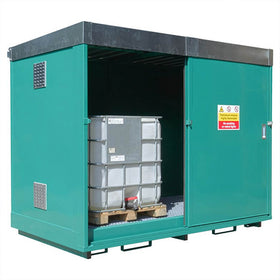Fines handed out over river pollution - A case study in spill containment
In the last two weeks three separate companies and institutions have been prosecuted by the Environment Agency for committing pollution offences that resulted in three rivers becoming contaminated. This article will look at one the incidents separately and assess how a spill could have been prevented.
Westram Ltd, Scunthorpe 2011:
The Incident:
On 13th January 2011, thieves broke into the premises of the Westram transport company in Scunthorpe with the intention of stealing fuel diesel from a metal tank. Although the thieves were disturbed the valve on the tap was left open and the diesel subsequently flowed into a surface water drainage pipe. Members of the public reported a strong odour of diesel in a tributary of the Bottesford Beck which was found to have spread 4km downstream from the source of the spill.
Upon discovery of the diesel spill the company “deployed spill kits and absorbent granules, which is the recommended practice for such incidences”, believing that they had managed to contain the spill. However, samples taken from the tributary by the Environment Agency did establish that diesel had contaminated the water and oil absorbent booms were deployed to prevent diesel from contaminating further. Westram transport also spent £45,000 employing contractors to clean up the pollution caused by the spill.
Westram Ltd were fined £23,000 and ordered to pay costs of £5,300 for a spill that they estimated was between 200 and 500 litres of diesel. The company felt the fine meted out was unjust and could result in redundancies being made. However, the Environment Agency identified two key areas where the companies spill management procedure was flawed; the lack of a secondary containment system for the diesel storage tank and the lack of a securable cabinet for housing the tanks pipe work and dispensing equipment.
With regards to the diesel tank, it should have been housed within a secondary containment system that could hold 110% of the primary tanks volume. One method for achieving this would be to construct a bund wall from reinforced concrete that is impermeable to water and oil. Furthermore, with the tank being located near to a surface water drainage pipe that flows into a tributary, the installation of a steel bunded tank would have met the standards required by the Environment Agency and the law and avoided a spill altogether.
If the tank had been fitted with a securable cabinet for housing the pipe work and dispensing equipment then the thieves would not have been able to access the diesel without exerting considerable force and again, this action would have led to the avoidance of a spill.
Finally, the company maintained that they followed the recommended practice by deploying spill kits and granules. Unfortunately, although these actions were pertinent to the situation, the company had failed to protect a vulnerable surface water drainage pipe that flowed into the tributary. If a thorough spill site assessment been conducted then the vulnerable surface drain would have been identified as being at potential risk from an oil spill.
The primary aim in any spill site assessment is to prevent pollutants from contaminating the watercourse. Therefore, if a permanent inflatable drain sealing system had been installed in the drain the diesel would have been unable to pollute the tributary, and save thousands of pounds in fines and remedial work.
The Environment Agency said they had “dealt with the case professionally and fairly at all stages.”
www.yellowshield.co.uk



